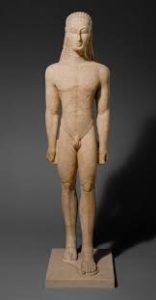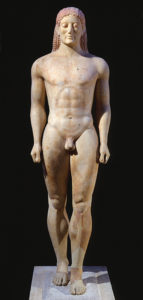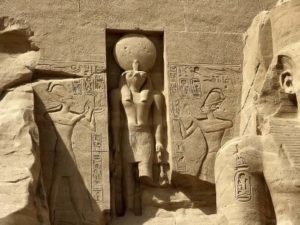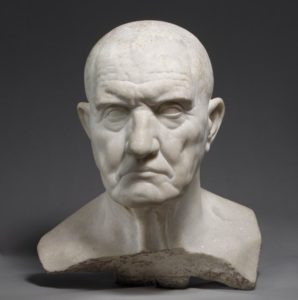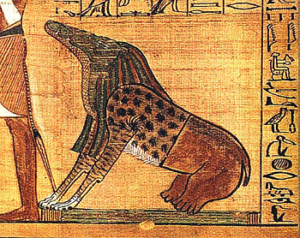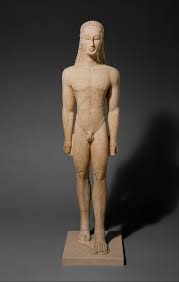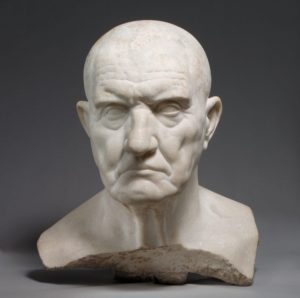Art in the ancient world varied from nation to nation. The Mesopotamian’s had sculptures of people that would pose but lacked in depth features and characteristic’s. For example, Kouros from six hundred BC, depicts a person standing with their left foot out and their right foot back to keep some form of balance for the sculpture. This is also seen in the sculpture also named Kouros but was found in Anavysos and was made approximately 530 BCE. At first glance the two are almost copy’s of each other however have slight differences. Such as the toning and definition given to the second Kouros’s torso. The head isn’t elongated as the first sculpture and feels more expanded. The arms are larger as well as all other parts of the body in the second sculpture.
One thing that may stand out is how or why would different nations construct the same sculptures with only minor differences? In the Ancient Era when nations pillaged the other they would claim not only the city and population, but also absorb a piece of their culture and art pieces. If not by war were the sculptures plundered it was simply through cultural diffusion and trade of knowledge. Later on the ancient Greeks made their own version of Kouros; It is named Polykleitos, Doryphoros made around 450-440 BCE. In this version of the Kouros, the sculpture is more muscular and more defined than previous versions. It resembles a more realistic depiction of a Greek athlete male in his youth. The foot work is similar in that the right foot is forward but the left leg is back with a bend to give a sort of balance to the sculpture. The right arm is not put down and side to side but are active, which symbolizes he could be holding either a spear or flag further creating the assumption he is a solider of some kind.
Much after the Greeks had their rise to prominence, another nation rose from it’s luster. The Roman Republic which later became the Roman Empire adopted much of the culture form the Greeks, this includes a basic democratic system as well as sculpture and art. One Roman sculpture has similarities to the previously mentioned Polykleitos, Doryphoros, it is Augustus of Prima. The Roman Republic at the time turned into the Roman Empire due to its civil war between Augustus Caesar and Pompey. It concluded in Pompey’s defeat when he was found executed by the Alexandrian’s to present to Julius as a extension of faith. The resulting civil war caused the the public to be uncertain of what would come next. Augustus knew how important self image was, and that being the legitimate ruler of Rome was a important to not only show but enforce unto himself. To show the strength and the military ferocity of their new leader he erected many statues such as the Augustus of Prima. The statue is very much similar to the Polykleitos, Doryphoros; for example the footwork is the exact same style as the Greek version. As well as the left side of the body positioned to hold a spear. The notable differences is only the features on the head and hair which depict Augustus Caesar.





